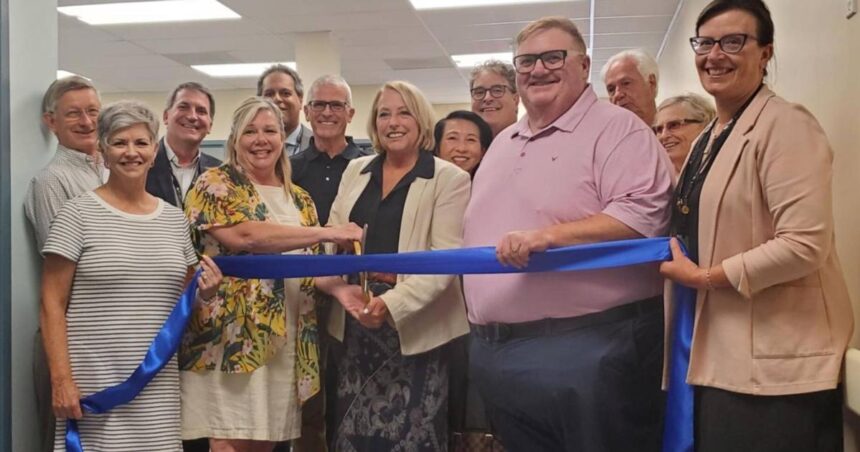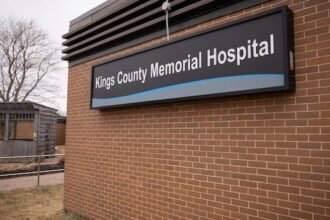The gleaming white cylinder of Huntsville District Memorial Hospital’s new magnetic resonance imaging (MRI) machine stands as a beacon of healthcare advancement in Muskoka. After years of community fundraising and meticulous planning, the hospital unveiled its state-of-the-art MRI suite last Friday, marking a transformative moment for healthcare delivery in the region.
“This is truly a game-changer for our patients,” said Dr. Lorraine Smith, Chief of Diagnostic Imaging at Huntsville District Memorial Hospital. “Patients who previously faced long journeys to Barrie or Orillia—sometimes in considerable pain or discomfort—can now receive vital diagnostic care close to home.”
The $6.5 million facility represents more than just a technological upgrade. For Muskoka residents, it means dramatic reductions in wait times and travel burdens. The machine, featuring the latest in diagnostic imaging technology, enables physicians to capture detailed internal body images using powerful magnetic fields rather than radiation, providing crucial information for diagnoses ranging from sports injuries to cancer detection.
Hospital administrators expect the unit to perform approximately 3,800 scans annually, serving not only Huntsville residents but patients throughout the broader Muskoka region. This capacity significantly enhances the hospital’s diagnostic capabilities while reducing strain on neighboring healthcare facilities.
The journey to Friday’s ribbon-cutting ceremony began with the Huntsville Hospital Foundation’s “Focus on Imaging” capital campaign, which successfully raised $5 million toward the project. Provincial funding covered the remaining costs, demonstrating a collaborative approach to healthcare investment that has become increasingly vital in addressing Canada’s medical infrastructure needs.
“What we’re witnessing today is the power of community determination,” remarked Katherine Mitchell, CEO of Huntsville District Memorial Hospital. “From the smallest donations to major corporate contributions, this facility represents thousands of individuals who recognized the critical importance of bringing advanced diagnostic capabilities to Muskoka.”
The suite’s design incorporates several patient-centered innovations. The MRI itself features a wider bore (opening) to reduce claustrophobia, ambient lighting systems to create a calming environment, and enhanced noise reduction technology. Adjacent consultation rooms provide private spaces for physicians to discuss results with patients, while the waiting area offers comfortable seating and natural light.
Hospital staff underwent specialized training over the past three months to operate the sophisticated equipment. This training, provided by the manufacturer and supplemented by experienced radiologists, ensures the healthcare team can maximize the diagnostic potential of the new technology while maintaining patient safety and comfort.
The MRI suite represents part of a broader trend in Canadian healthcare to decentralize specialized medical services, bringing advanced diagnostics closer to rural and semi-rural populations. Healthcare policy experts suggest this approach not only improves access but potentially reduces overall system costs by enabling earlier intervention and reducing transportation expenses.
For Huntsville resident Eleanor Chambers, who attended the opening ceremony, the new facility holds personal significance. “My husband waited nearly six months for an MRI last year, and we had to drive to Barrie three times because of scheduling issues,” she shared. “Having this service here in town means everything to families like ours.”
As the Huntsville hospital celebrates this milestone, healthcare planners are already looking ahead. The expanded diagnostic capabilities may attract additional specialists to the region and could position the hospital for further service expansions in the future.
In a healthcare landscape often defined by resource constraints and difficult trade-offs, how might this community-driven achievement serve as a model for addressing other critical medical needs in underserved regions across Canada?










